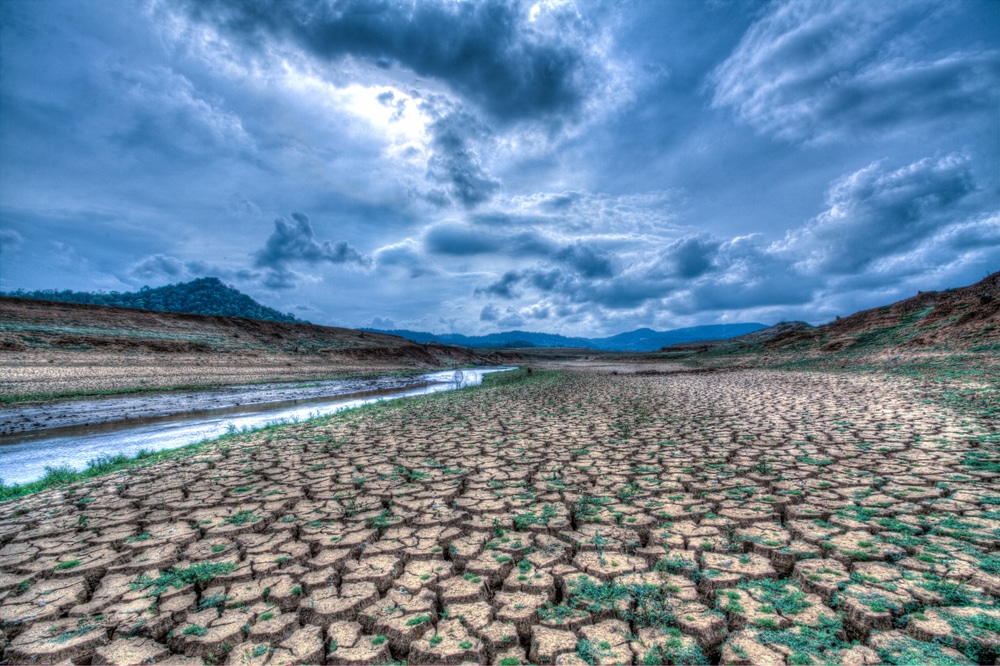Climate change is a global problem. While the impacts on the environment are devastating, It’s not just an environmental issue – it affects the economy, communities and public health as well. Australia is no exception to this rule. In fact, Australia is particulalrly vulnerable to the effects of climate change because of its extensive arid and semi-arid areas, an already warm climate, high annual rainfall variability, and existing pressures on water supply. This article will explore 9 ways that climate change has impacted Australia since records began in 1910.

What is climate change?
Before we go through our list, we should explain what climate change actually is. The world’s climate naturally varies over time, but the changes that are taking place now are different than anything experienced before by human civilisation. While some variability in weather patterns is natural and expected (for example, El Niño), scientists attribute most of the documented global warming to an increased greenhouse effect since industrialisation. There are many things that contribute to climate change all around us, including carbon dioxide emissions from burning fossil fuels like coal and natural gas for energy; deforestation; livestock farming; industrial processes; car exhausts – even air travel contributes to this problem! These emissions are adding heat-trapping gases into our atmosphere at unprecedented levels.
Top 9 impacts of climate change in Australia
Warming
Australia has warmed on average by 1.44 ± 0.24 °C since national records began, with most warming occurring since 1950 and every decade since then being warmer than the ones before. Australia’s warmest year on record was 2019.
Bushfires
Since 2000 there have been increasing periods of above average bushfire activity, including the 2009 Black Saturday fires in Victoria that claimed 173 lives and had a total damage bill of $17 billion. From late 2019 to early 2020, fires burnt across most of Australia with such an intensity, extent and duration not previously experienced. The fires were devastating, causing up to 50 million acres being burned, the deaths of 34 people, the destruction of thousands of buildings and the loss of millions of animals and their habitats. Permanently ‘wet’ forests that usually suppress fires burnt for the first time.
A study by Oxford University on the role of human induced climate change in the 2019–2020 South-Eastern Australian bushfire season found that Australia’s bushfires are ‘made 30% more likely by climate change’.
Drought
Over recent decades there have been a number of prolonged droughts in different regions around the country, exacerbated by unusually high temperatures driven by climate change. These widespread droughts, particularly in central and western New South Wales, southwest Queensland and parts of Victoria, have reduced soil moisture and dried vegetation, the grim consequence of which were apparent in the intensity of last summer’s bushfires.
Climate models for Australia predict there will be less and less rainfall over most of southern Australia under climate change, making droughts more frequent and more severe.
Extreme weather events
We experience weather and all its variables everyday but extreme weather events such as cyclones, heatwaves or floods are less common. However, these types of events are becoming more frequent and intense in Australia due to climate change. The impact of severe weather events goes beyond physical damage—it also takes a toll on the mental health of communities.
Sea level rise
Sea levels have risen in Australia at an average rate of 2.1 mm/year over the past half century, at a faster rate than at any time in the 20th century. While this may seem inconsequential, the impact of this rise will be devastating for Australia, with most of the population living along the coast. The CSIRO says we are likely to see increased flooding of low-lying coastal areas, coastal erosion, loss of beaches, and higher storm surges that will affect coastal communities, infrastructure, industries and the environment.
Biodiversity
Another way climate change has impacted Australia is through biodiversity loss due to increased temperatures, severe weather events such as bushfires and droughts, salinisation of fresh water supplies and coastal erosion – all of which having significant consequences on the natural environment and ecosystems.
Coral reefs
Climate change can have significant detrimental impact to coral reefs, like our precious Great Barrier Reef. Coral reefs are at risk from climate change primarily because of coral bleaching which is a stress response to abnormal environmental conditions such as prolonged high water temperature. The stress causes coral to expel its algae, therefore becoming transparent and susceptible to dying. In the past five years, the Great Barrier Reef has suffered from mass bleaching three times—in 2016, 2017 and 2020.
Economy
Extreme weather events such as bushfires, floods and storms have caused billions of dollars damage to properties and infrastructure that were not insured against those types of disasters. It’s hard to estimate the eventual economic cost of Australia’s 2019-20 mega-fires, but it’s safe to say the cost will be unprecedented.
There have also been significant losses associated with the profitability of Australian agriculture—reports indicate that the profitability of Australian farms was cut by 22% due to climate change in the years 2000–2019.
Public health
The impacts of climate change affect public health in a variety of ways—with extreme weather events being one significant way they do so. Extreme weather events can lead to an increased number of deaths and injuries, water-borne diseases such as gastroenteritis due to poor sanitation conditions following flooding or power outages, respiratory illnesses related to air pollution caused by fires and mental health issues associated with severe droughts affecting farming communities.
Its impact is felt particularly among disadvantaged communities which can be aggravated by a range of factors including overcrowding, poor housing conditions, low socio-economic status and limited access to affordable healthcare (yes, even in Australia). These groups are most at risk from heatwaves where mortality rates increase significantly during heatwaves. In January 2009, a heatwave in Victoria led to 374 deaths, with those who were socially or economically disadvantaged being three times as likely to be affected compared to most advantaged groups.

What can we do to stop climate change in Australia?
There are many ways to help stop climate change in Australia. One of the most significant things you can do is reduce your greenhouse gas emissions and energy consumption by choosing low-carbon transport, housing and appliances or simply reducing your reliance on electricity from the grid. Installing solar panels on your roof is an excellent choice in the fight against climate change because the sun is a free source of clean power.
You can also choose to purchase sustainable goods and services, support Australian businesses that are investing in renewable energy or helping restore natural ecosystems.
Another way is by participating in the political process – letting your local MP know you want action on climate change so they will act accordingly. Signing petitions, supporting community-led events and joining an advocacy group are also great ways to get involved.
Are you ready to do your bit for the environment while saving thousands on your electricty bills? Join millions of Australians who have already made the switch to solar. Receive up to 3 FREE, obligation-free quotes from trusted local solar installers in Melbourne – it’ll only take you a few minutes! You can also call us on 1800 EMATTERS or email our friendly team for expert, obligation-free advice.













































